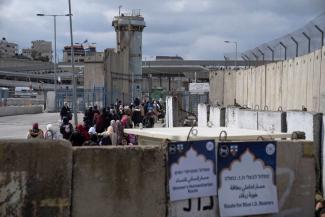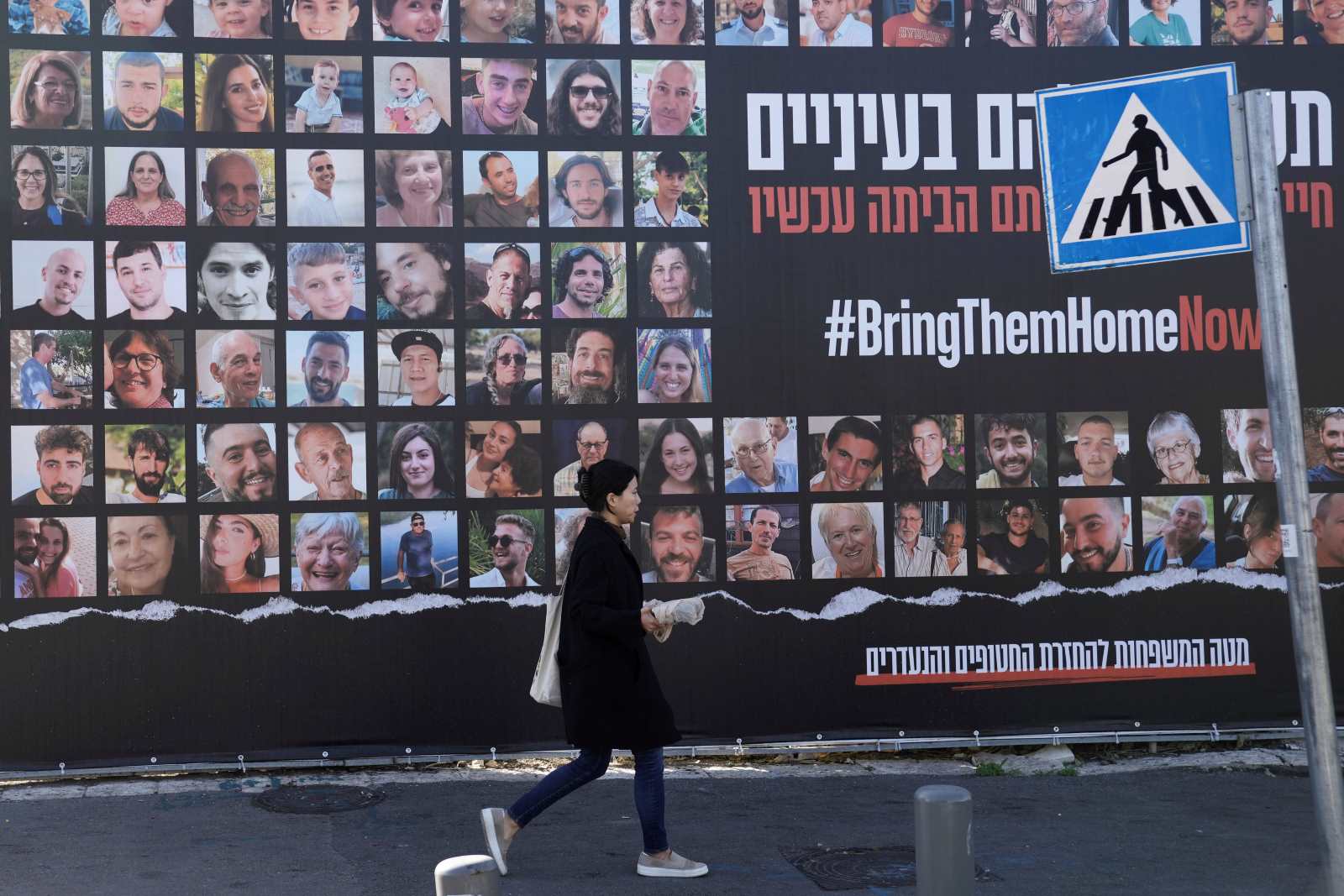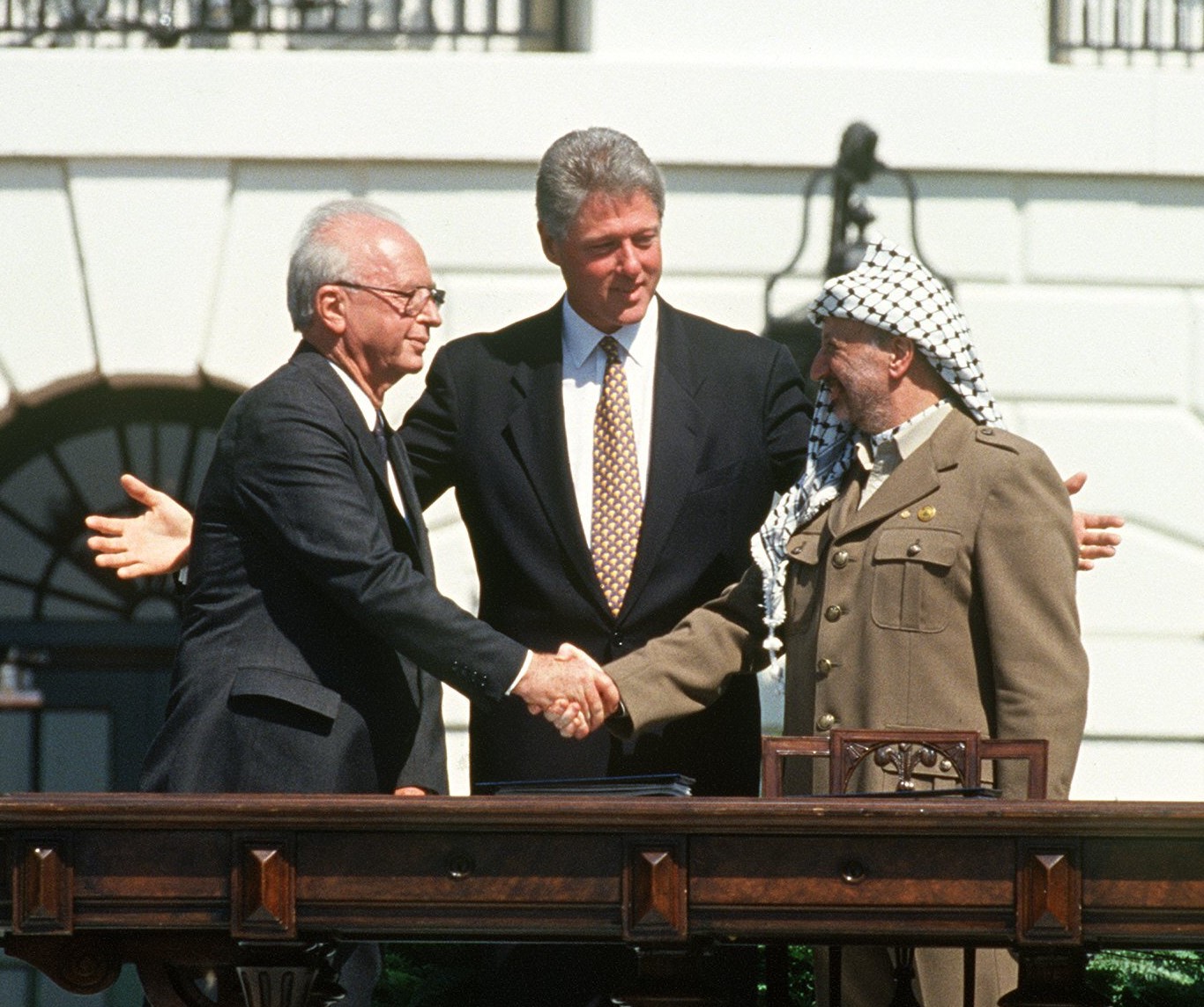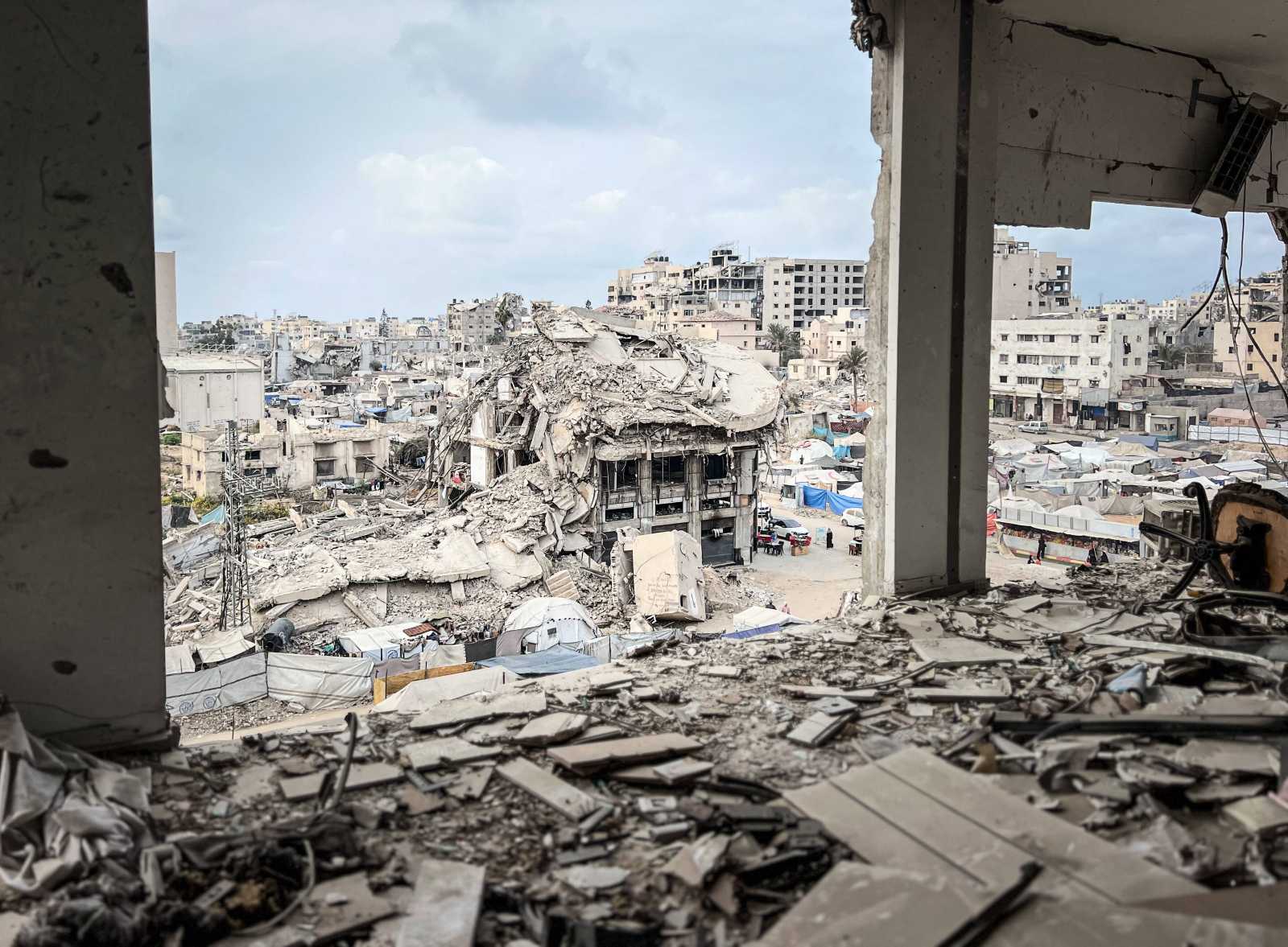Israel/Palestine
Barriers on the road to peace in Israel/Palestine

Israel is currently using walls and barriers to keep potentially hostile people out. Defending the fortifications requires military force and ideological discipline. In old times, martial means may have sufficed, but in today’s world, ideological issues matter too.
The land currently controlled by Israel through walls and barriers contains a mixture of different kinds of land:
- Some of it was granted by the UN decision in 1948 to create the state of Israel. The Palestinian state which the UN envisioned at the same time, however, was never established.
- Israel later obtained additional land in various wars with Arab neighbouring countries. Some of that land was annexed, while other parts remain occupied territory.
- Though Israel withdrew its security forces from the Gaza strip in 2007 but stayed in control of that territory’s foreign trade, migration system, currency, birth registers and infrastructure.
Depending on where they live, Palestinians have different rights today. Those families who stayed within Israel’s borders in 1948 got rights that are almost equal to those of Jewish Israelis. Those who live on annexed territory – especially in East Jerusalem – were not granted those rights. The rights of people who live in the West Bank and Gaza are even more precarious.
Israel’s occupation was secured through military control and the construction of settlements in the West Bank. Israeli settlers enjoy rights and privileges not afforded to Palestinian residents. Palestinian life is made complicated and hazardous by security measures like checkpoints and barriers. Poor infrastructure and weak systems of education and healthcare matter too. The situation in Jewish settlements is generally much better.
To various degrees, Palestinians are thus only second-class citizens on their ancestral land. In the West Bank, some law enforcement was delegated to the Palestinian authority, which was established in 1994 after the signing of the Gaza–Jericho Agreement (also known as Oslo II). In many cases, however, Israeli security forces are still in control and have a pattern of harassing Palestinians. Israeli courts have jurisdiction moreover. In disputes between Israelis and Palestinians, different laws apply to the two communities. The courts mostly decide in favour of the Israelis. Major human-rights groups speak of “apartheid”, and as Jewish philosopher Susan Neiman argued on this platform, this controversial term makes obvious sense in the West Bank.
Two Intifadas
Palestinians did not simply accept their fate. The First Intifada (“Uprising”) began in December 1987 and lasted until the early 1990s. It was a largely grassroots rebellion characterised by widespread civil disobedience, protests, strikes and acts of violence against Israeli military forces and settlers. The primary grievances included Israeli occupation, settlement expansion and lack of political rights for Palestinians. The First Intifada led to significant changes in the Israeli-Palestinian conflict, including the recognition of the Palestine Liberation Organization (PLO) by Israel and the initiation of peace talks in the Oslo Accords.
The Second Intifada, which is also known as the Al-Aqsa Intifada, erupted in September 2000 after a visit by then-Israeli opposition leader Ariel Sharon to the Temple Mount/Haram al-Sharif compound in Jerusalem. Continuous expansion of Jewish settlements on occupied Palestinian land was a main grievance.
The Second Intifada was marked by more violence, including suicide bombings and shootings, which led to harsh Israeli responses. The number of casualties was high on both sides. The Second Intifada also disrupted the peace process and lead to increased distrust. It petered out around 2005, but so have hopes for the two-state solution that the Oslo Accords promised.
Fragmented Palestinian unity
In 2006, Palestinian legislative elections were held for the second time. Hamas, an Islamist outfit, won a majority of seats. Its victory was unexpected and caused tensions between Hamas and Fatah, which had previously been the dominant force in Palestinian politics. The acrimony culminated with Hamas violently taking over control of the Gaza Strip in June 2007. Since then, the Palestinian territories have had separate administrations, with Hamas controlling Gaza and Fatah controlling parts of the West Bank.
The takeover of power in Gaza by Hamas was bloody. More than 160 people died in the fighting and more than 700 were wounded. In Gaza, Fatah officials were either taken as prisoners, executed or expelled. Both Fatah and Hamas have kept representatives of the other party in detention and often mistreated them.
Since 2006, there have been no democratic Palestinian elections. Accordingly, neither party is wielding administrative powers with a serious democratic mandate.
Growing religious influence in Israel
Israel was founded by Jewish immigrants, many of them being survivors of pogroms and the holocaust. The initial immigrants were mostly a-religious or only Jewish by ethnic identity. Many were inspired by socialist ideas and took part in the kibbutzim movement. For a long time, the Labour party was the dominant political force in Israel.
However, several wars with Arab neighbours led to a growing sense of insecurity which was further amplified by the increasing immigration of Jews from North Africa (Sephardic) and Russia. Neither group had previously experienced democracy nor been able to make use of civil liberties.
The followership of Israel’s right-wing parties grew, and the two Intifadas amplified that trend. Calls for security and controlling the Palestinian population increased. Polarisation became worse. On 4 November 1995, the right-wing extremist Yigal Amir, who opposed the Oslo accords, murdered Prime Minister Yitzhak Rabin during a peace rally in Tel Aviv.
Last year, the trend towards right-wing rule culminated in the attempt of the Netanyahu government to weaken the independence of the judiciary. Huge numbers of Israelis rallied against what they called a “judicial coup” in defence of their Supreme Court. Its independence, they argued, is necessary for upholding democratic norms, ensuring accountability in governance and preventing abuses of power. Indeed, Prime Minister Benjamin Netanyahu has been accused of corruption and will face several court cases once he leaves office and thus loses his immunity. While the protest movement emphasised the rule of law, equal rights for Palestinians hardly got any attention.
Israel’s extremist nationalist-religious parties typically prioritise issues related to Jewish identity, settlement expansion in the West Bank and religious law. To a considerable extent, they have built close relations with right-wing Evangelicals in the USA, who are awaiting a second coming of Jesus Christ in Palestine.
Israeli society is therefore deeply divided today. While modern ideas of democratic statehood inspire the masses that rose up against the judicial reform plans, a more tribal understanding of identity motivates those who support Netanyahu’s right-wing coalition. Secular notions of democracy thus collide with faith-based notions of community.
Islamists matter too
A similar divide is evident on the Palestinian side. Fatah and the PLO want a secular state, while Hamas and other Islamist forces such as Islamic Jihad link nationalist rhetoric to religion. These groups often frame their struggle as a religious one (“jihad”). They cite Quranic verses and Hadiths (sayings of the Prophet Muhammad) to justify armed resistance and argue that Palestine must be liberated from non-Muslim rule. They claim to contribute to a global Muslim cause and enjoy the solidarity of Muslims in general.
A particular irony is that religious fundamentalists on both sides share a mythology that explains the conflict. Jewish history starts with the departure of the Jewish people from Ur, an ancient city located in what is now southern Iraq. This departure is traditionally associated with the biblical narrative of the patriarch Abraham. According to the Hebrew Bible, Abraham (originally named Abram) was born in Ur but left the city with his family and followers. The exact timing of this departure is not precisely known and is subject to debate among scholars and historians. In terms of biblical chronology, Abraham’s departure from Ur is typically placed around the early to mid-2nd millennium BCE.
According to the biblical narrative in the Book of Genesis, Abraham’s two sons Isaac and Ishmael had different mothers. Isaac was the son of Sarah, Abraham’s wife. She gave birth to Isaac in her old age, as a miraculous fulfilment of God’s promise to Abraham. Ishmael on the other hand was the son of Hagar, Sarah’s Egyptian maidservant. According to the mythology, Sarah, who remained barren for a long time, offered Hagar to Abraham as a surrogate to fulfil God’s promise of offspring to Abraham. This myth is significant within the narrative of the Abrahamic faiths, as Isaac is considered the ancestor of the Israelites and the Jewish people, while Ishmael is considered the ancestor of the Arabs, particularly in Islamic tradition.
Scientific research suggests that Jews and Arabs share some genetic markers, which is not surprising since both go back to populations who lived in the Middle East. Various studies indicate that migrations, inter-marriage and cultural exchange has always been important in the region. In this sense, one might actually consider the decades-old conflict something like a family feud.
The feud must not go on, however. Its impacts are devastating. Deadly attacks by Palestinian militants on Israelis, mostly civilians, go into hundreds counting from 1989 to 2016. On the other hand, there is also a long history of deadly settler violence against Palestinians. Neither side is blameless, though both pretend to be innocent victims.
The attack on Israel by Hamas on 7th October was the worst example of brutal and indiscriminate violence perpetrated by Palestinians. Some 1200 Israelis were killed and about 240 kidnapped into Gaza. The event triggered the current Gaza war. By early January, about one percent of Gaza’s population had died. By mid-February, the death toll had risen by another 7000 to 29,000. At that time, about 1.5 million people were displaced within the Gaza strip. The humanitarian situation remains desperate.
No eternal solution
Left to religious fundamentalists, the area between the Jordan River and the Mediterranean Sea will not see peace. The violence will continue. Both Jewish and Muslim hardliners are trying to achieve an eternal solution, but history shows that no kind of rule lasts forever. Indeed, the region belonged to different empires in different eras – including those of Babylon, Rome, Arabs and Ottomans, for example. None of them proved permanent.
An end to the vicious cycle of violence is possible. It will require a negotiated solution which only diplomacy can bring about. The challenge is huge, but – apart from recurring bloodshed and lasting insecurity – there really is no alternative. In another post I will argue how a peace plan might work out.
Raymond Saner is the co-founder of the Geneva-based Centre for Socio-Eco-Nomic Development (CSEND). As an evaluator and consultant, he has been involved in monitoring the Geneva Initiative which followed the Oslo Accords and their impacts.
saner@csend.org

















